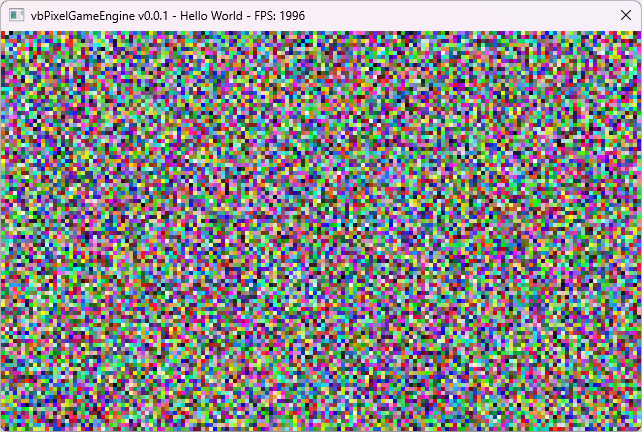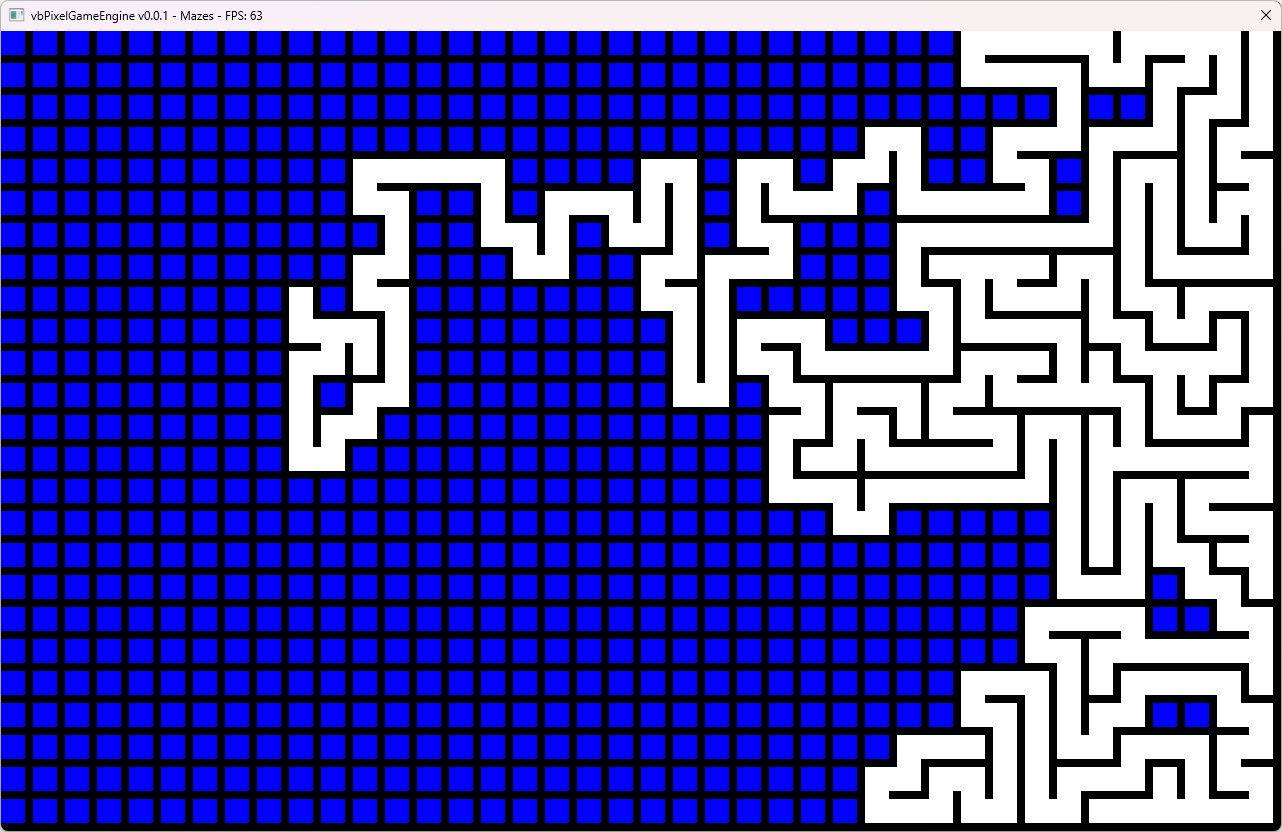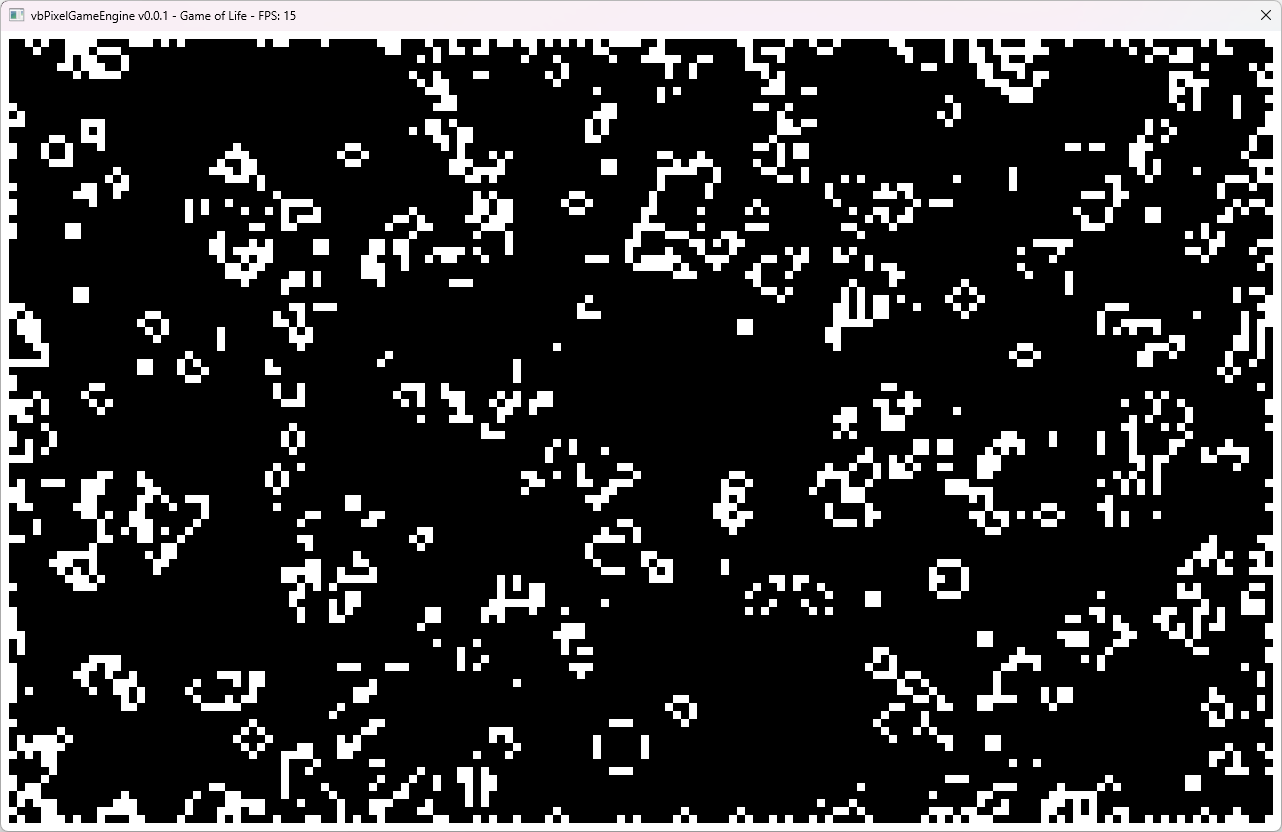-
-
Notifications
You must be signed in to change notification settings - Fork 0
Examples
Here is a list of the examples available along with a brief description, a link to the source as well as (if available) a link to @javidx9's video that inspired the related example.
Demonstrates the "boiler plate" necessary to get started.
- [ Source ]
Provides a few examples (toggled using the spacebar) of some of more simplistic drawing capabilities.
- [ Source ]
Demonstrates the Recursive Back-tracker algorithm to generate a maze.
- [ Source ]
- [ @javidx9's video ]
John Conway's Game of Life demonstrating cellular automata.
- [ 04 - GameOfLife ]
- [ @javidx9's video ]
A simple racing game example similar to Pole Position.
An example demonstrating Catmull-Rom Splines which offer a way to have curves in your applications. Explores programming related to spline paths and loops that can also be applied to NPC movement.
- [ @javidx9's video ]
Yup, it's a game of Frogger.
- [ @javidx9's video ]
And now for Asteroids.
- [ @javidx9's video ]
Continuing the example started in Splines1, this demonstrates how to move objects around a spline with a consistent velocity.
- [ @javidx9's video ]
A rough example demonstrating displaying video in a from a webcam while converting pixel RGB values into characters with a limited palette and looking "good" (originally targeting Command Prompt).
- [ @javidx9's video ]
Demonstrates an implementation of the A* path finding algorithm.
- [ @javidx9's video ]
A first-person shooter like engine (originally targeting Command Prompt).
- [ @javidx9's video ]
Demonstrates the approximation of the Perlin Noise algorithm for use in game design.
- [ @javidx9's video ]
Yes... FlappyBird (originally targeting Command Prompt) which demonstrates levels that never end and introducing basic game physics.
- [ @javidx9's video ]
Demonstrates a brute-force implementation of an Optical Flow algorithm.
- [ @javidx9's video ]
A Worms-like game. In part 1 focuses on adding game units, particles and some physics.
- [ @javidx9's video ]
A Worms-like game. In part 2 focuses on user input, cameras and state machines.
- [ @javidx9's video ]
A Worms-like game. In part 3 focuses fit and finish; including unit AI.
- [ @javidx9's video ]
Collision detection for circles.
- [ @javidx9's video ]
Improves the circle physics-based engine, introduces a more accurate method for tracking time for use in simulations as well as implements an arbitrary edge object that can be used to displace and deflect balls.
- [ @javidx9's video ]
Demonstrates a simple yet smooth tile-based 2D platform jumper.
- [ @javidx9's video ]
Creating a top-down roleplaying game.
- [ @javidx9's video 1 ]
- [ @javidx9's video 2 ]
- [ @javidx9's video 3 ]
- [ @javidx9's video 4 ]
A very quick-and-dirty Breakout-style game.
- [ @javidx9's video ]
Demonstrates a pseudo 3D style display similar in style to the MODE7 implementation on the Super Nintendo.
- [ @javidx9's video ]
Examines a framework to experiment with different racing lines along a parametric track.
- [ @javidx9's video ]
Demonstrates a technique to easily add panning and zooming to your application.
- [ @javidx9's video ]
Introduces vertices and triangles resulting in a rotating cube in 2-axis.
- [ @javidx9's video ]
Continues from the previous and adds triangle culling.
- [ @javidx9's video ]
Implements cameras and clipping planes including working with points and matrices.
- [ @javidx9's video ]
Adds texturing and depth buffers.
- [ @javidx9's video ]
A crude level editor.
A basic sprite editor.
The above examples are ports of the of what was originally done using vbConsoleGameEngine (and olc::ConsoleGameEngine) and, as such, may still retain the associated "low-resolution" and "limited-color" style related to the game engine targeting the Command Prompt (text-mode) display.
The following are not available for vbConsoleGameEngine.
- [ @javidx9's video ]
- [ @javidx9's video ]
- [ @javidx9's video ]
- [ @javidx9's video ]
- [ @javidx9's video ]
- [ @javidx9's video ]
- [ @javidx9's video ]
- [ @javidx9's video ]
- [ @javidx9's video ]
- [ @javidx9's video ]
- [ @javidx9's video ]
- [ @javidx9's video ]
- [ @javidx9's video ]
- [ @javidx9's video ]
- [ @javidx9's video ]
- [ @javidx9's video ]
- [ @javidx9's video ]
- [ @javidx9's video ]
- [ @javidx9's video ]
- [ @javidx9's video ]
Note: It is about this time that the announcement of olc::PixelGameEngine 2.0 is announced.
- [ @javidx9's video ]



